The application lets you recover source servers using CA ARCserve D2D data that was converted to Hyper-V Virtual Standby virtual machines.
Note: The application uses the bare metal recovery process to recover source servers from Hyper-V virtual machines. For more information, see Recovering Source Servers Using Bare Metal Recovery.
To recover source servers using data from Hyper-V Virtual Standby virtual machines
The BIOS Setup Utility screen is displayed.
Note: If you are using Windows PE image to perform BMR, select an architecture (x86/x64) and press Enter to continue.
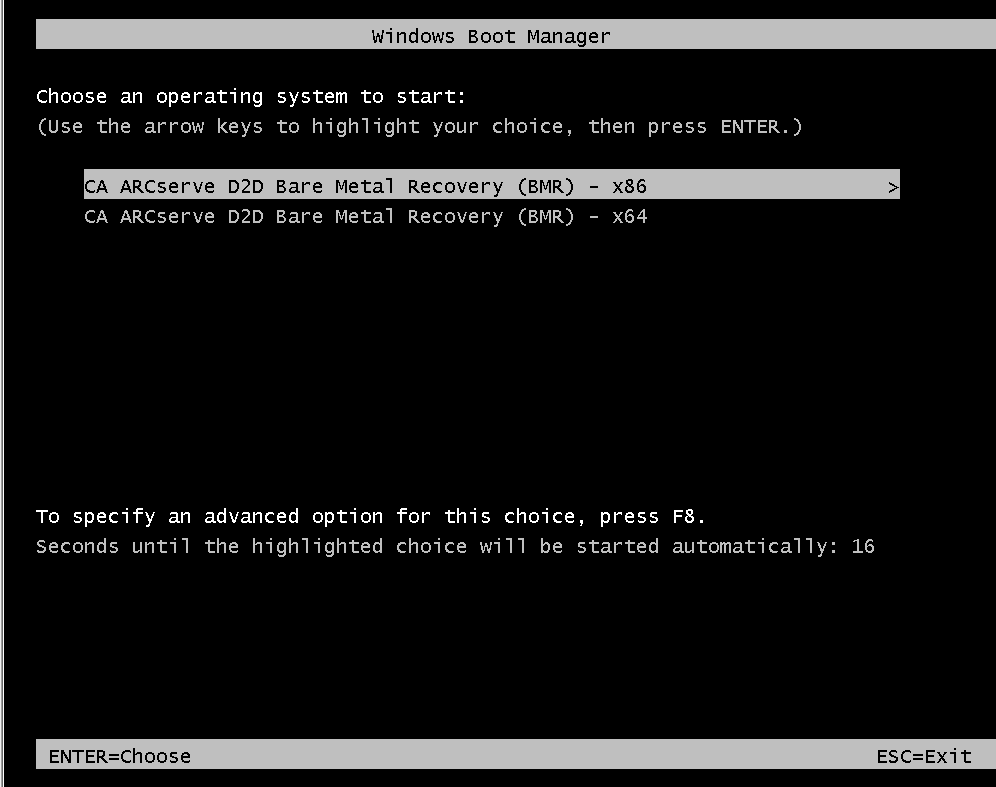
Note: If you perform BMR with a BMR USB stick and a Windows 7/Windows Vista/Windows 2008/Windows 2008 R2 installation media (CD/DVD) not supported with a Multilingual User Interface (MUI), the language select screen is suppressed.
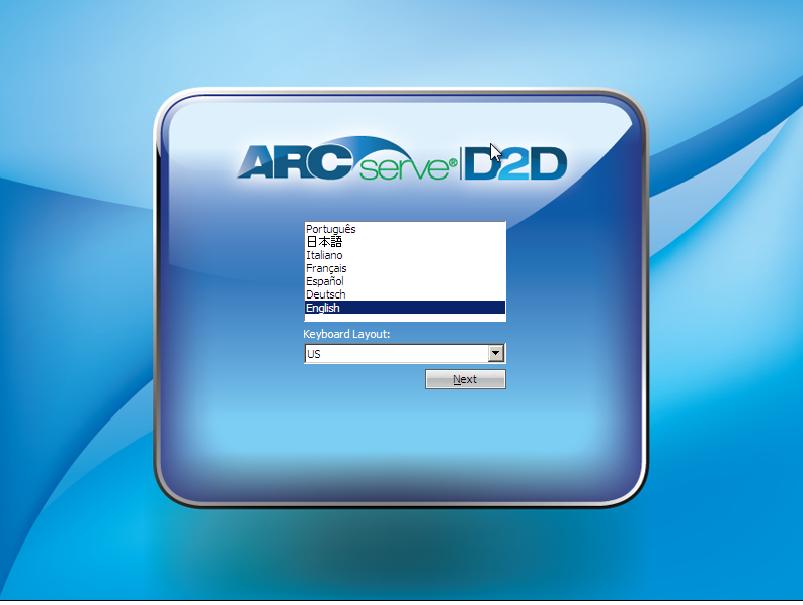
The Bare Metal Recovery process is initiated and the initial BMR wizard screen is displayed.
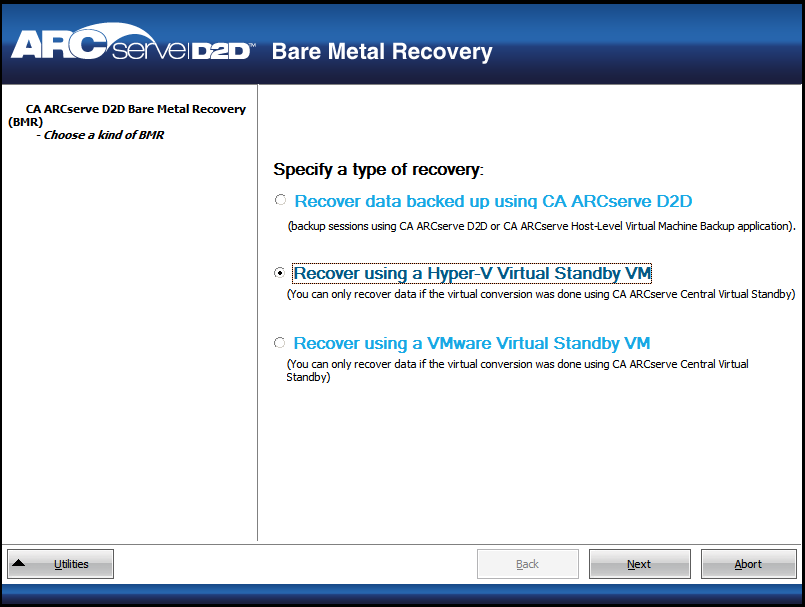
The Select a virtual machine snapshot screen is displayed, with the Hyper-V Authentication dialog, prompting you for Hyper-v server details.
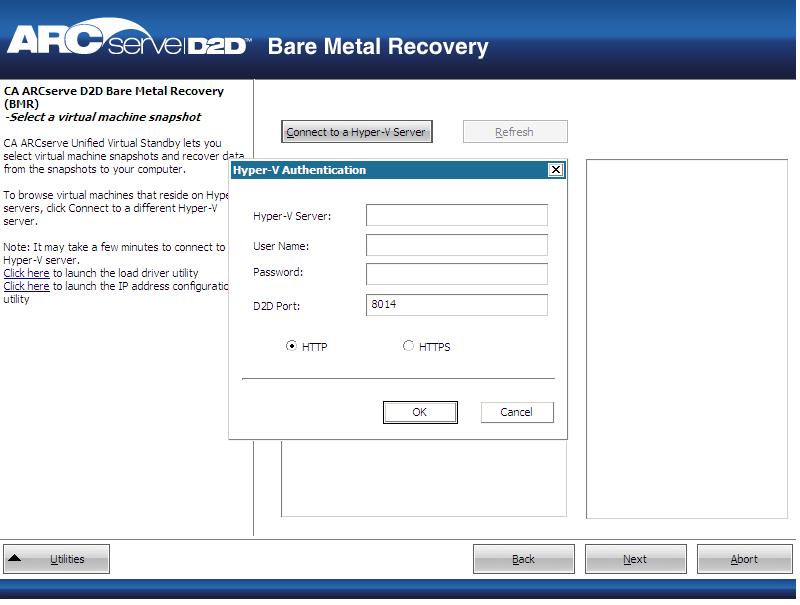
CA ARCserve D2D detects and displays the Hyper-V Server with a listing of all the virtual machines that are converted to the specified Hyper-V server using CA ARCserve Central Virtual Standby.
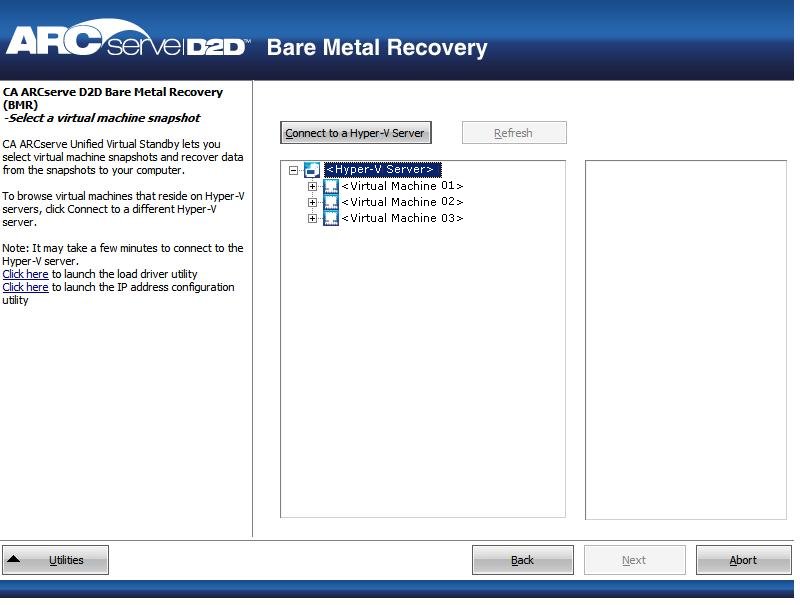
The backup sessions (recovery point snapshots) for the selected virtual machine are displayed.
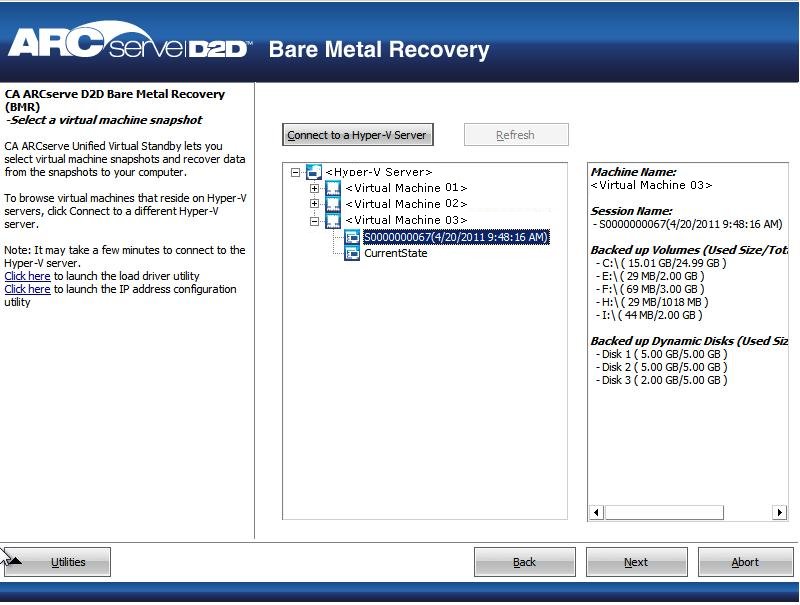
The corresponding details for the selected recovery point snapshot (virtual machine name, backup session name, backed up volumes) are displayed in the right pane.
In addition to selecting one of the listed recovery points, you also have the option to select the "Current State" or the "Latest State" recovery point.
If you select the "Latest State" recovery point, an error message is displayed to inform you that the recovery point you are recovering from is the Latest (and not the Current) state and requesting that you start the virtual machine before continuing with the recovery process.
A BMR wizard screen is displayed with the available recovery mode options.
The available options are Advanced Mode and Express Mode.
Default: Express Mode.
Note: The remainder of this procedure is applicable only if you selected the Advanced Mode and the procedure provides information to guide you through the BMR process.
The BMR utility starts locating the machine that is going to be recovered and displays the corresponding disk partition information.
The upper pane shows the disk configuration that you have on the current (target) machine and the lower pane shows the disk partition information that you had on the original (source) machine.
Important! A red X icon displaying for a source volume in the lower pane indicates that this volume contains system information and has not been assigned (mapped) to the target volume. This system information volume from the source disk must be assigned to the target disk and restored during BMR or the reboot fails.
Note: If you perform BMR and you restore the system volume to a disk which is not configured as the boot disk, it will fail to boot the machine after BMR is completed. Ensure that you are restoring the system volume to a properly configured boot disk.
Note: When restoring to another disk/volume, the capacity of new disk/volume must be the same size or larger than original disk/volume. In addition, disk resizing is for basic disks only, and not for dynamic disks.
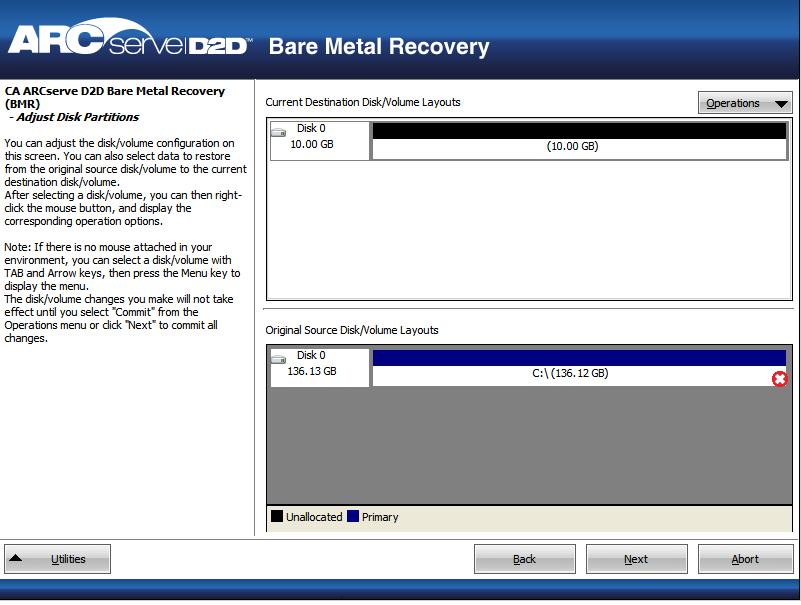
From this menu, you can reset any existing partitions or you can create new partitions to correspond to the disk partitions on the source volume. (Reset means to reload the source and target disk layout information from the configure file and current OS, and discard any user changed disk layout information).
Note: When mapping to another disk, the capacity of each mapped target volume must be the same size or larger than the corresponding source volume.
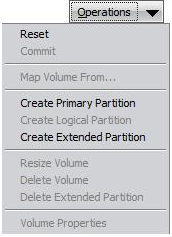
The Select a Basic Source Volume dialog opens.
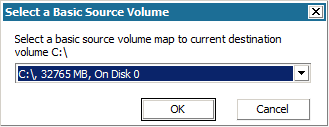
The Submit Disk Changes screen opens, displaying a summary of the selected operations. For each new volume being created, the corresponding information is displayed.
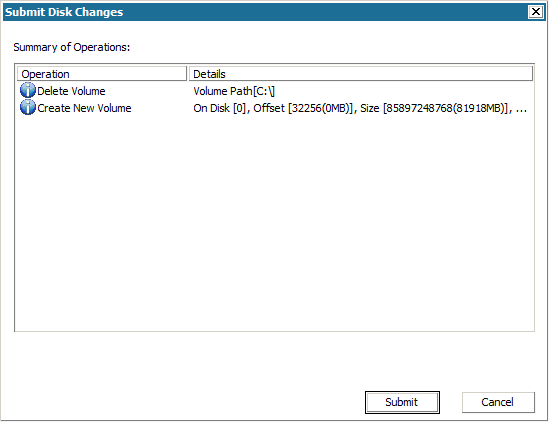
Note: All operations to the hard drive do not take effect until you submit it.
On the target machine, the new volumes are created and mapped to the corresponding source machine.
The Summary of Restore Settings screen opens, displaying a summary of the volumes that are going to be restored.
Note: On the bottom of restore summary window, the drive letters listed in "Destination Volume" column are automatically generated from the Windows Preinstallation Environment (WinPE). They can be different from the drive letters listed in "Source Volume" column. However, the data is still restored to proper volume even if drive letters are different.
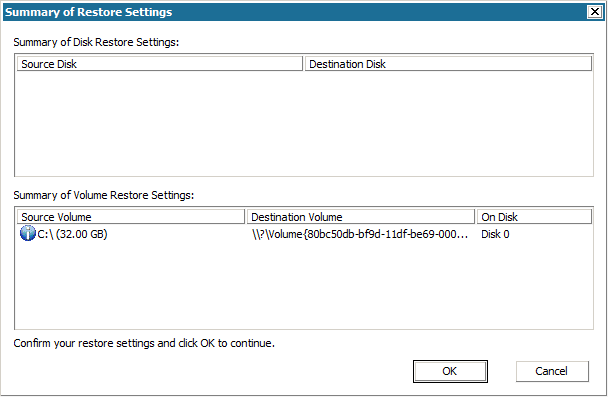
The restore process starts. The BMR wizard screen displays the restore status for each volume.
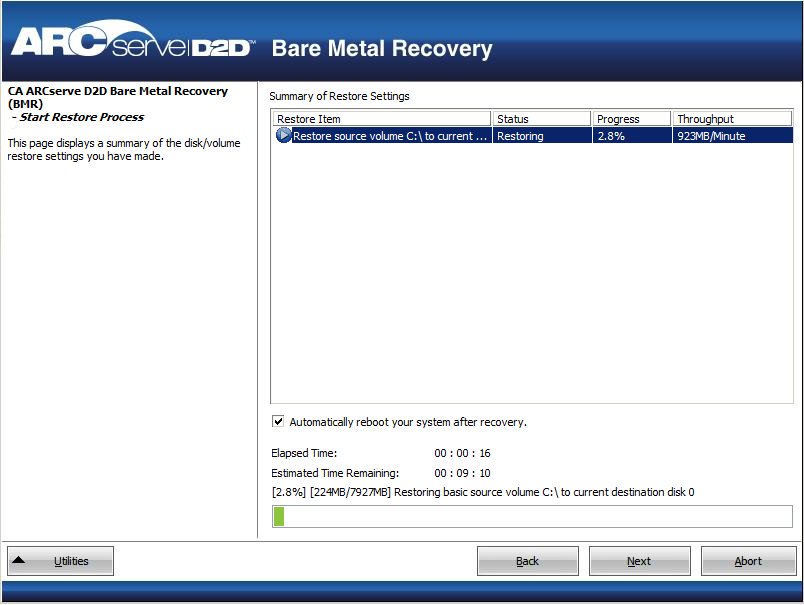
By default, the Activity Log is saved to the following location:
X:\windows\system32\dr\log.
Note: To avoid getting a Windows-generated error, do not save the Activity Log on your desktop or create a folder on your desktop using the "Save As" option from the BMR Activity Log window.
You can browse and select drivers to inject to the recovered system so that even if you are recovering to a machine with dissimilar hardware, you can still bring back the machine after BMR.
Notes: After completion of BMR:
| Copyright © 2012 CA. All rights reserved. |
|